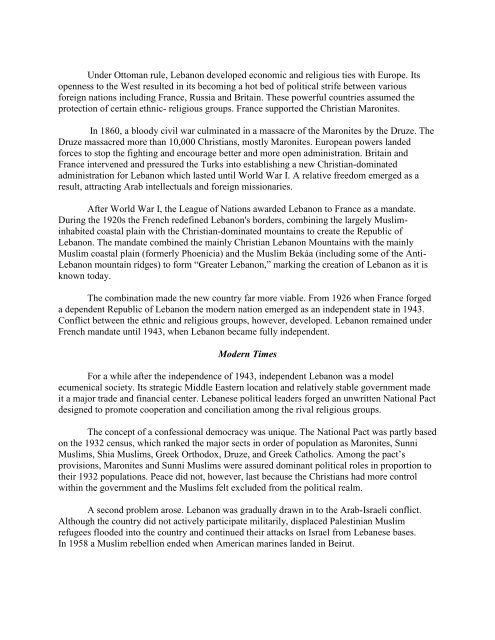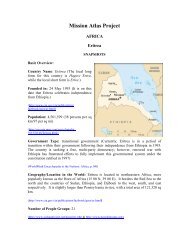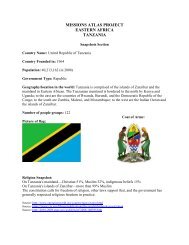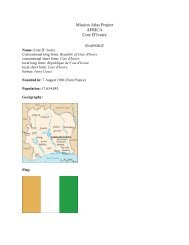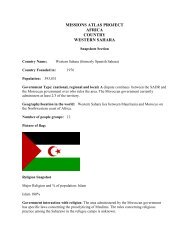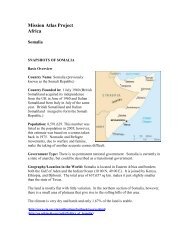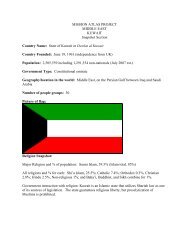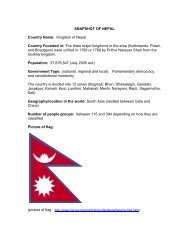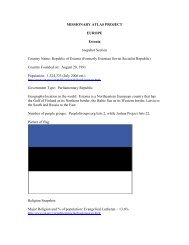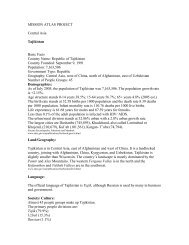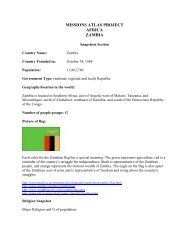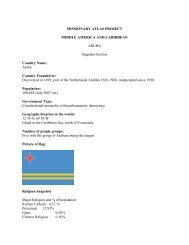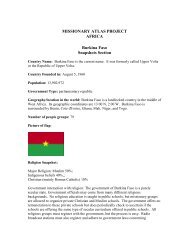Lebanon Profile.pdf - WorldMap
Lebanon Profile.pdf - WorldMap
Lebanon Profile.pdf - WorldMap
You also want an ePaper? Increase the reach of your titles
YUMPU automatically turns print PDFs into web optimized ePapers that Google loves.
Under Ottoman rule, <strong>Lebanon</strong> developed economic and religious ties with Europe. Itsopenness to the West resulted in its becoming a hot bed of political strife between variousforeign nations including France, Russia and Britain. These powerful countries assumed theprotection of certain ethnic- religious groups. France supported the Christian Maronites.In 1860, a bloody civil war culminated in a massacre of the Maronites by the Druze. TheDruze massacred more than 10,000 Christians, mostly Maronites. European powers landedforces to stop the fighting and encourage better and more open administration. Britain andFrance intervened and pressured the Turks into establishing a new Christian-dominatedadministration for <strong>Lebanon</strong> which lasted until World War I. A relative freedom emerged as aresult, attracting Arab intellectuals and foreign missionaries.After World War I, the League of Nations awarded <strong>Lebanon</strong> to France as a mandate.During the 1920s the French redefined <strong>Lebanon</strong>'s borders, combining the largely Musliminhabitedcoastal plain with the Christian-dominated mountains to create the Republic of<strong>Lebanon</strong>. The mandate combined the mainly Christian <strong>Lebanon</strong> Mountains with the mainlyMuslim coastal plain (formerly Phoenicia) and the Muslim Bekáa (including some of the Anti-<strong>Lebanon</strong> mountain ridges) to form “Greater <strong>Lebanon</strong>,” marking the creation of <strong>Lebanon</strong> as it isknown today.The combination made the new country far more viable. From 1926 when France forgeda dependent Republic of <strong>Lebanon</strong> the modern nation emerged as an independent state in 1943.Conflict between the ethnic and religious groups, however, developed. <strong>Lebanon</strong> remained underFrench mandate until 1943, when <strong>Lebanon</strong> became fully independent.Modern TimesFor a while after the independence of 1943, independent <strong>Lebanon</strong> was a modelecumenical society. Its strategic Middle Eastern location and relatively stable government madeit a major trade and financial center. Lebanese political leaders forged an unwritten National Pactdesigned to promote cooperation and conciliation among the rival religious groups.The concept of a confessional democracy was unique. The National Pact was partly basedon the 1932 census, which ranked the major sects in order of population as Maronites, SunniMuslims, Shia Muslims, Greek Orthodox, Druze, and Greek Catholics. Among the pact‟sprovisions, Maronites and Sunni Muslims were assured dominant political roles in proportion totheir 1932 populations. Peace did not, however, last because the Christians had more controlwithin the government and the Muslims felt excluded from the political realm.A second problem arose. <strong>Lebanon</strong> was gradually drawn in to the Arab-Israeli conflict.Although the country did not actively participate militarily, displaced Palestinian Muslimrefugees flooded into the country and continued their attacks on Israel from Lebanese bases.In 1958 a Muslim rebellion ended when American marines landed in Beirut.


